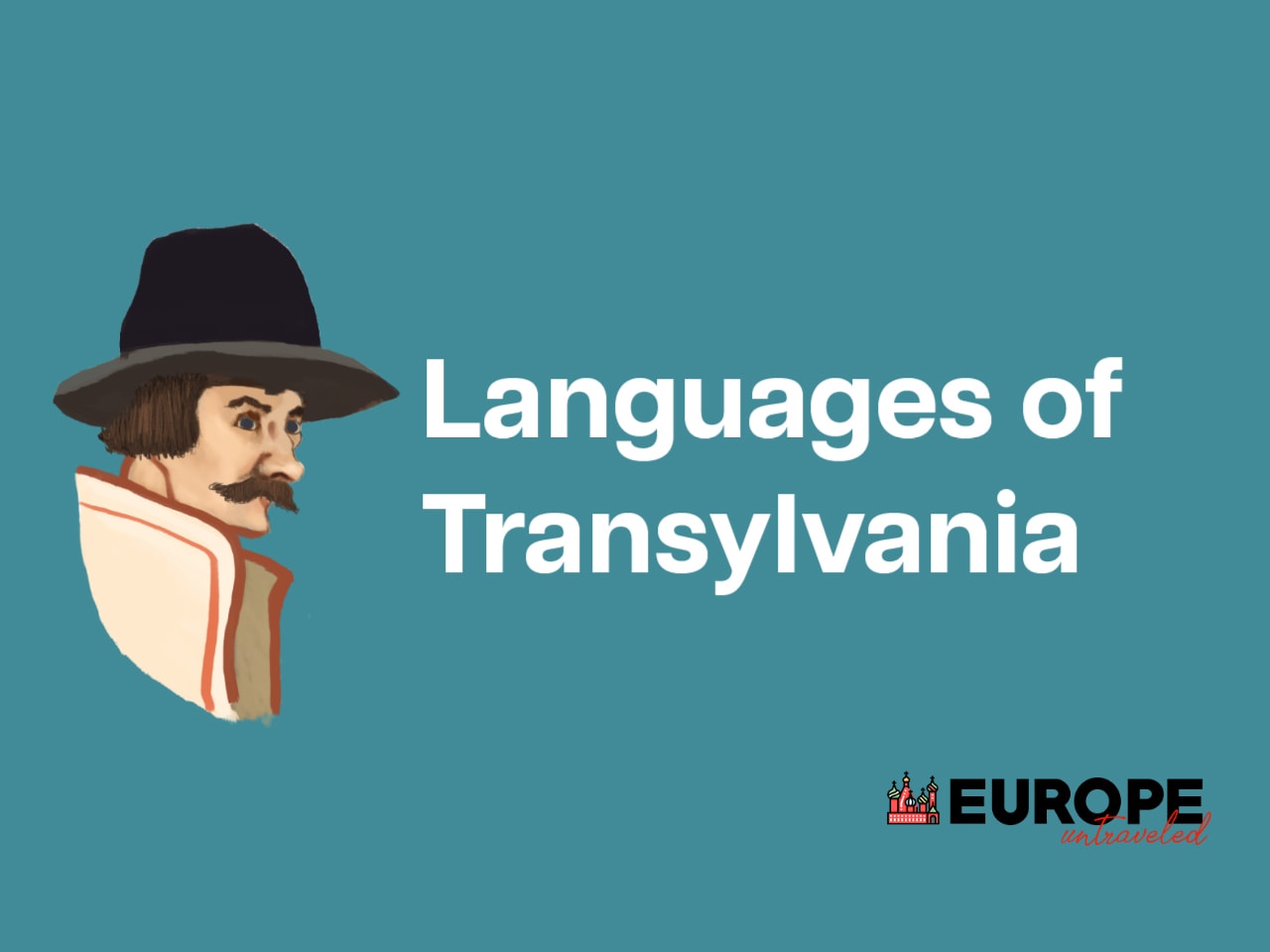While Romanian is the most common language you’ll hear in Transylvania, there exist isolated villages and towns in which no Romanian is spoken at all.
In some sense, Transylvania is a place where time has stood still. Modern borders have little relevance here, and people cling to the cultural and linguistic legacies of their ancestors who inhabited these mountains centuries ago.
What Language is Spoken in Transylvania?
Romanian is the primary language spoken in Transylvania, with 75% of Transylvanians claiming Romanian as their mother tongue. Hungarian is the next most commonly spoken language in Transylvania, with 23% of Transylvanians claiming it as their first language.
Here is an overview of first languages spoken in Transylvania:
| Language | Native Speakers | % of Transylvania Population |
| Romanian | 2,830,112 | 75.34% |
| Hungarian | 862,317 | 22.95% |
| Rromani | 48,356 | 1.29% |
| German | 10,432 | 0.28% |
| Other | 5,011 | 0.13% |
| Total | 3,756,701 | 100% |
The above stats are based on a tabulation of census data in Transylvania’s 9 principle counties: Alba, Bistrița-Năsăud, Brașov, Cluj, Covasna, Harghita, Hunedoara, Mureș and Sibiu.
Generally speaking, Romanian is the official and most widely-spoken language in Transylvania. This makes sense, as Romanians have always inhabited certain regions of Transylvania, and at times have ruled over this area.
What makes Transylvania unique, however, is the existence of isolated pockets in the region where virtually no Romanian is spoken at all.
The Significant Role of Hungarian in Transylvania
Second to Romanian, Hungarian is commonly spoken throughout Transylvania. There are over 862,000 native Hungarian speakers living in Transylvania. In some towns and villages inhabited by ethnic Hungarians, the frequency of native Hungarian speakers tops 90%.
Here are some large towns in Transylvania where over 80% of the population are native Hungarian speakers:
- Odorheiu Secuiesc (Pop. 36,948, 96% Hungarian)
- Targu Secuiesc (Pop. 20,488, 91% Hungarian)
- Sovata (Pop. 11,614, 90% Hungarian)
- Gheorgeni (Pop. 20,018, 88% Hungarian)
- Miercurea Ciuc (Pop. 42,029, 82% Hungarian)
It’s not uncommon to meet Hungarians in such villages who, despite having lived their whole lives in Romania, cannot speak a word of Romanian.
Romanian law ensures that government services are available in minority languages whenever the rate of the minority language exceeds 20% in a given locality.
As a result, there are pockets of Transylvania where ethnic Hungarians can get by on Hungarian alone, and never bother to learn Romanian.

One summer during university, I worked as a farmhand bailing hay on a rural farm in Transylvania. Andras (pictured here) worked alongside me and, despite being from the village next door, he could only speak Hungarian!
This has, at times, led to controversy and clashes between Hungarian and Romanian ethnics, who feel that the Hungarian population needs to integrate into broader Romanian society.
In fact, this linguistic reality is just one feature of a broader conflict surrounding the identity of Hungarians in Transylvania. Many Hungarians see themselves as Transylvanians, and not Romanians.
Recent factions of the Hungarian government have made it possible for these Romanian nationals to apply for and receive Hungarian citizenship, strengthening their sense of Hungarian identity.
In some ways, it makes sense that Hungarians in Transylvania are fighting so hard to not lose their particular cultural identity. The next largest minority group in Transylvania, the Saxons, have all but disappeared.
German is on the Decline in Transylvania
German is the fourth most common language spoken in Transylvania, with approximately 10,000 native speakers. Most native German speakers in the region are Transylvanian Saxons, whose ancestors settled the region centuries ago.
If you pay attention, you’ll notice that many Transylvanian towns and cities have German names in addition to their Romanian ones. For example, Sibiu was originally settled by Saxons as Hermanstadt.
Saxon settlements like Sibiu were once teeming with German Speakers, Protestantism, and Saxon German life. Since WWII, however, most Saxon Germans have repatriated from Romania to Germany.
Today, Saxon culture and the German language are rapidly dying out in Transylvania.
Despite their shrinking numbers, these Saxon settlers, called Sasi in Romanian, have left an indelible mark on the Transylvanian region. In particular, their architectural legacy is still visible throughout the area.
Brasov’s (aka Kronstadt) famed Biserica Neagra (Schwarze Kirche in German), is one such example of this legacy. It’s an incredible Gothic monument and the largest Lutheran church of its kind in Romania.

I’ve heard German still being spoken around Sibiu a handful of times, mostly by elderly residents. It’s fascinating to see them around town, as their features are obviously German.
Interestingly, Romania’s president, Klaus Werner Iohannis, is a Saxon from the Transylvanian town of Sibiu. He is known for his thick and slow German/Transylvanian accent, and speaks fluent German in addition to Romanian.
Romani in Transylvania
There are approximately 48,000 Transylvanians whose first language is Romani, making it the third most popular language in the region. Romani consists of several unique dialects spoken by Romania’s gypsy, or Roma, population.
The Roma people have lived in Central Europe, including Transylvania, for centuries. They first came to the area in the Middle Ages from lands near present-day India.
Uniquely, the Romani language is Indo Aryan, not Indo European. Despite being spoken primarily in Central Europe, the language shares similarities with far away languages such as Urdu, Bengali, and Punjabi.
Similar to the Hungarian and German populations in Transylvania, the Romani population considers themselves ethnically distinct from Romanians. They practice their own culture and customs, which have been passed down for centuries.
Roma in Transylvania tend to live in rural villages with a high concentration of other Roma. Despite intensive government efforts, the Roma population has not integrated with broader Romanian society and is poorer and less educated than other ethnic groups in the region.

